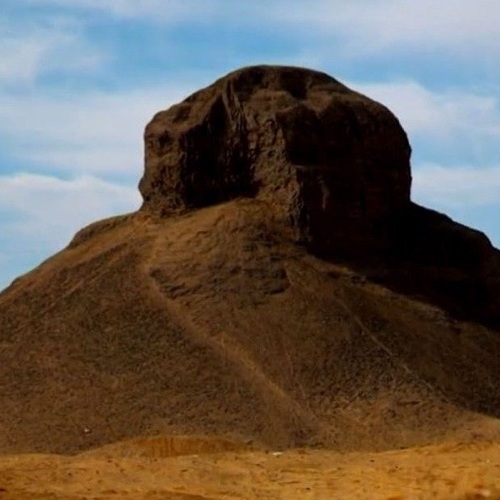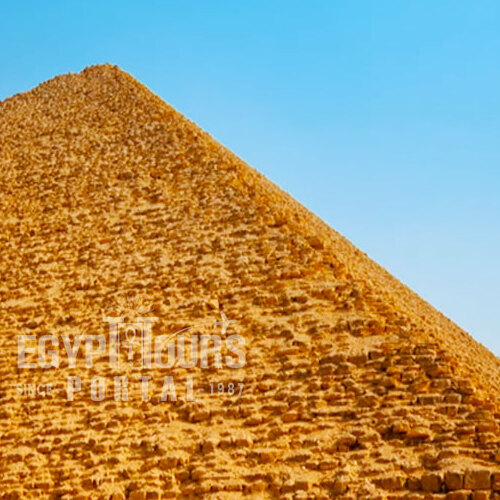No other nation in the world says ‘Welcome’ as often as the Egyptians, and every time, they mean it. While the ancient civilization of Egypt continues to amaze, contemporary Egyptians are equally remarkable.
The White Pyramid
The Enigmatic Legacy of the White Pyramid: A Silent Witness to Ancient Majesty
In the realm of Egypt’s rich history, amidst the reign of Senwosret I, a pharaoh whose legacy would endure through his son Amenemhet II Nubkaure, the Twelfth Dynasty witnessed the rise of another grand architectural marvel—the White Pyramid. Nestled in the sacred Dahshur necropolis, a stone’s throw to the northeast of Snefru’s Bent Pyramid, this monumental structure stands as a testament to ancient ambition and engineering prowess.
Once adorned with brilliant white Tura limestone casings, the White Pyramid earned its name from this pristine exterior. Regrettably, the passage of time bore witness to the relentless actions of tomb robbers who pilfered the casings, leaving behind the true limestone core. Yet even this core was not spared the ravages of centuries, with excavations and disturbances erasing much of its original form. Today, what remains are piles of white limestone chips strewn about the pyramid’s base. In the annals of ancient Egypt, it was known simply as “Amenemhet Provides,” a nod to its royal patron.
In the late 19th century, between 1894 and 1895, the French archaeologist Jacques de Morgan embarked on an exploration of this historic site. His primary focus was drawn to the tombs of high-ranking officials and royal women that surrounded the pyramid, as well as the treasures concealed within. Yet, despite his efforts, the true nature of the pyramid’s base, its angle, and height remain shrouded in mystery. The base measures a mere 50 meters, with the valley temple, mortuary temple, and causeway also largely unexplored.
Located at the midpoint of the northern face, the pyramid’s entrance lies beneath the chapel entrance. A straight, sloping passageway leads to a small horizontal corridor, culminating in the burial chamber. The entrance is sealed by two massive granite slabs, with four niches adorning the subterranean chamber, likely intended for burial items or statues. Below the horizontal corridor, a concealed lower chamber rests, its flat ceilings ingeniously designed to support the weight of the towering stones above. Adjacent to the western wall, a quartzite sarcophagus rests within the floor, echoing the solemnity of the tomb.
On the pyramid’s eastern side, the funerary temple, though largely dismantled over time, revealed precious relief fragments to de Morgan during his exploration. Two imposing structures near the entrance, resembling pythons, added to the enigmatic aura of the site.
Encircling the complex stands a rectangular enclosure wall, reminiscent of those seen around the pyramids of the Third Dynasty, a testament to the enduring architectural traditions of Egypt.
Behind the western façade of the White Pyramid, de Morgan’s excavations unveiled well-preserved burials within the enclosure wall. These were the final resting places of Queen Khnemet, Princess Ita, and Princess Itweret. Nearby, the tombs of Princess Sithathormeret and Prince Amenemhetankh were discovered. Notably, the burial sites of Princesses Itweret and Ita yielded a treasure trove of exquisite jewelry and precious artifacts, now proudly on display in the hallowed halls of the Cairo Museum.
As we stand before the enigmatic White Pyramid, we are transported through time, offered glimpses of Egypt’s regal past, and invited to unravel the mysteries that still cling to this ancient monument. Its silent stones bear witness to a history etched in grandeur and secrets yet uncovered, awaiting those who dare to explore its timeless legacy.
Created On March 18, 2020
Updated On July 22 , 2025
Giza Travel Guide



